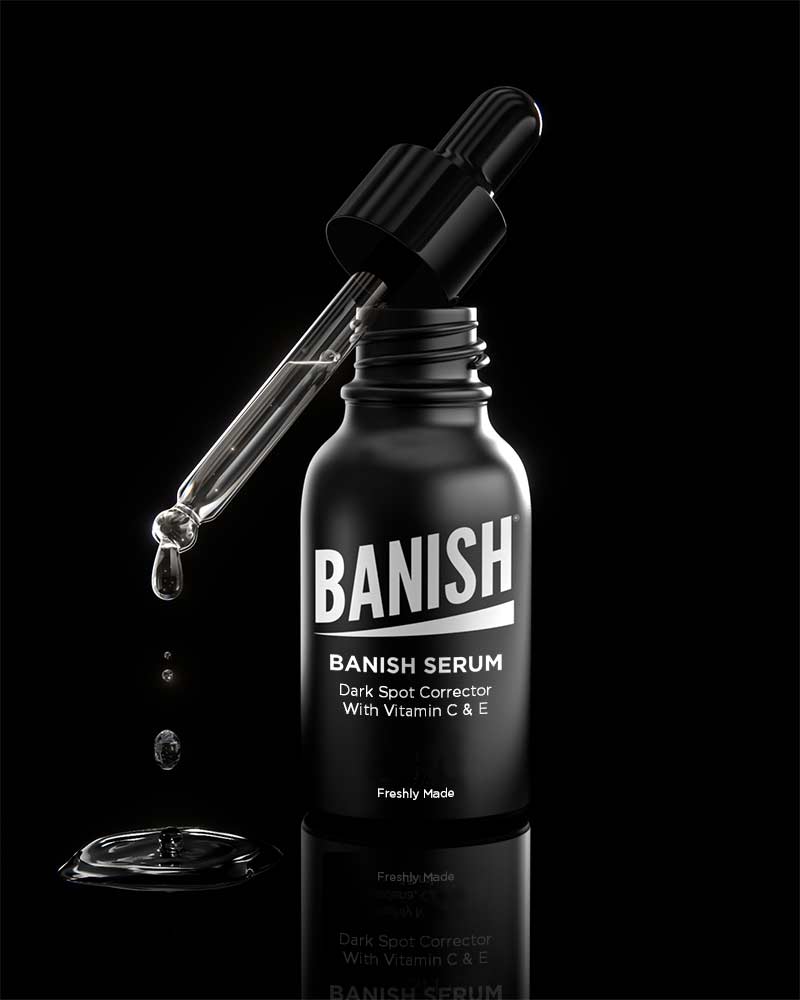You may have heard of microneedling especially if you've been looking into different acne scarring treatments. While there are microneedling treatments available at certain esthetician offices or dermatologist clinics, microneedling at home is also on the rise.
What's Microneedling?
Microneedling is the process of creating controlled microinjuries on the skin to increase collagen. It's known for reducing acne scars, hyperpigmentation, fine lines, and enhancing topical product absorption.
Is it a good idea to microneedle at home? It can be as long as you follow the proper steps and use the correct home use microneedling tool.
We have noticed there’s been a few myths circulating about microneedling, particularly microneedling at home and would like to clear those up referencing some studies.
Can You Microneedle At Home Safely?
There has been no study that says ‘microneedling at home’ is dangerous, and you can microneedle at home safely although it does have some risks that can easily be avoided.
We asked dermatologist Dr. Anna Chacon who is Registered in all 50 U.S. states, her thought on the best microneedling tool to use at home.
"The only at home microneedling tool that I recommend to my patients is the Banisher 2.0 and I personally use it myself. Why do I like this over others? I know that Banish products are from a reputable source because the Banisher comes from the same manufacturer that makes the same professional microneedling devices that we currently use in office.” - Dr Anna Chacon.
What's the Best Tool For Microneedling At Home?
Generally, microneedling at home poses little risk because at home use tools have needles at 0.5mm or lower and the risks tend to increase as you get into more aggressive treatments with deeper needles. Deeper needles that can draw blood should only be used in a professional setting.
When it comes to different microneedling tools, derma rollers can have a slightly higher risk of scarring when used too aggressively.
Motorized microneedling pens can glide and drag on the skin causing unnecessary extra damage if not used properly.
The safest tool option would be a stamp option.
Why A Stamper Is Safer Than A Derma Roller
Dermatologist Dr. Davin Lim says that "Stamping devices are much better than rollers, especially if you do it at home”
Stampers don't have the risk of dragging to cause 'tram track' scarring. Which are scars that look like little lines across the skin from improper dermarolling technique or the pens getting dragged on the skin.
There are claims about microneedling at home leading to infection, however from what we've seen, there has been only 1 reported case of infection when a woman used a derma roller over active cysts and spread that onto her face.
So if you are microneedling over an active infection and rash, then yes it can probably cause that infection to spread. As long as you avoid doing that, you can eliminate that risk. Similar to how shaving over bumps or rashes can also spread infection, yet many people still choose to shave at home - just don't go over the infection.
Who shouldn't microneedle at home?
Generally as long as you use a stamper that is 0.5mm and under, and follow the instructions to thoroughly cleanse skin, microneedling at home is safe and poses little risks.
What that said there are some conditions which microneedling at home isn't recommended.
Dr. Myro of UCLA health says that “If you have diabetes, eczema, or immune system problems you probably should not do this at home, but if you’re otherwise healthy it can make a huge difference on the way skin looks and feels”
How To Prevent infection:
Never microneedle over active acne or any rash, or any part of skin that looks like there could be a breakout.
The Banisher 3.0 is a microneedle stamp created so one can target areas AROUND a pimple, instead of derma rolling over the entire face.

Will Microneedling At Home Cause Granulomas?
Granulomas were reported in 3 cases of microneedling in med spas, two of which were done at the same med spa.
In 2 of the 3 patients, they continued to get professional microneedling even though they noticed adverse reactions from their skin-they started getting a rash.
They used a Sanitas C serum however they hypothesized that an "unknown fragrance or preservative.” in part of the serum formula was the likely culprit.
So in short, no it isn't necessarily that vitamin c serums cause granulomas, because not all vitamin c serums are made with the same ingredients.
The best way to prevent a reaction is if you use a serum that you are comfortable with and know your skin already tolerates well.
Patch test your skin with your serum and microneedle tool on a small area to determine if you'll have a negative reaction.
Should You Microneedle At Home?
In this day and economy, not everyone has access to dermatologists and can afford professional microneedling treatments that run $500+ a session, especially if they still have active breakouts.
However, if you can afford professional microneedling and like the results, go for it!
At Banish, it is our priority to make sure all the products are as ‘foolproof’ as possible and are the absolute safest at home microneedling products out there.
When using the right home microneedle tool correctly, it is safe to do at home and worth trying especially for acne scars, collagen boosting, and dark spots.
Which At Home Microneedling Tool Is Safest To Use?

1. When it comes to safety, the Banisher 3.0 is the safest out there while still able to give the collagen enhancing results. Gold has anti microbial properties.
“The Banisher 3.0 is a medical-grade device. It’s manufactured to the same standards as surgical instruments. Importantly, it has 0.5mm needle/bristle length. The needles are far finer and far sharper with 24k Gold Titanium needles.” - Dr. Davin Lim, Dermatologist.
2. Banisher 3.0 'needles' are much thinner and finer than all the rest.
3. They are also much shorter, making it 'foolproof'.
4. Patented sanitizing screw on cap protects the Banisher and cleans it thoroughly by placing rubbing alcohol in the cap.
Banish, in fact uses the same manufacturer that the plastic surgeons and dermatologists use for their professional microneedling tools.
Tips For Microneedling At Home Safely
- Never share your device with anyone else!
- Never microneedle over active breakouts or rashes
- Remember to replace your device or needles. With the Banisher we recommend replacing the replaceable head after 4-8 sessions.
- Always use 70%-90% isopropyl alcohol to clean your microneedle tool before using. Make sure the bristles are completely submerged in the alcohol.
- Thoroughly cleanse the skin you will microneedle on before starting. Optional, you may use 70% isopropyl alcohol pad or cotton ball dipped in alcohol to cleanse the skin before microneedling for extra precaution. Use moisturizer to hydrate skin thoroughly afterwards.
- Wash your hands thoroughly before microneedling.
- Make sure the serum you are using on top afterwards has few fragrance or is something you've patch tested or used before.
- Use the Banisher microneedle tool up to once a week, give your skin time to heal in between uses.
- Always stay out of the sun the day of microneedling, and use a fragrance free mineral sunscreen afterwards. Don't apply makeup or irritating exfoliants or retinol until the next day.
You can also read our microneedling aftercare guide for more indepth aftercare!
Things that people normally do daily like wearing contact lenses can also have an infection risk when you don't properly care for them and keep clean.
While there are minor risks, it should be up to the consumer to make their choice for what is right for them.
We're here to provide the safest home microneedle tools and education on how to use it properly to eliminate the risks for people who are interested in microneedling at home to treat acne scars or fine lines.
So if you are comfortable doing it yourself, then microneedling at home is perfectly fine and safe to do and will give you results!
------
References
Biosynthesis, characterization, and antibacterial activity of gold nanoparticles
















Leave a comment
All comments are moderated before being published.
This site is protected by hCaptcha and the hCaptcha Privacy Policy and Terms of Service apply.